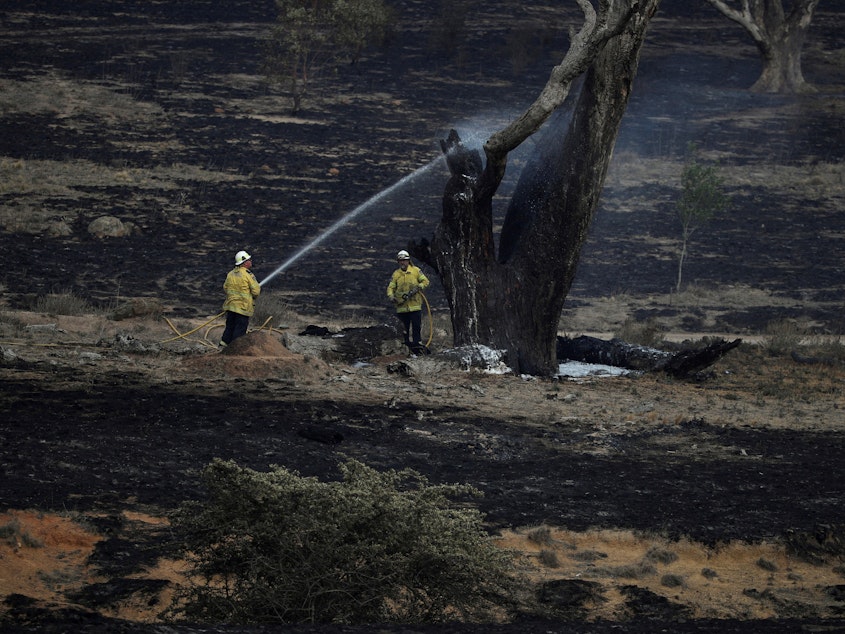Officials In Australia's New South Wales Celebrate: 'All Fires Are Now Contained'

Fire officials in Australia are celebrating a landmark moment, saying that for the first time in what has been a horrendous wildfire season, every fire in hard-hit New South Wales is now under control. The news comes after the state endured fires that destroyed more than 2,400 homes and burned 5.4 million hectares of land – or about 13.3 million acres.
The reprieve was aided by more than a week of heavy rains that helped fire crews extinguish or control dangerous fires. And while that deluge has created its own problems, such as flooding and mudslides, firefighters are welcoming the news that they finally have the upper hand in combating fires and can aid the recovery process.
"After what's been a truly devastating fire season for both firefighters and residents who suffered through so much this season, all fires are now contained in New South Wales, which is great news," NSW Rural Fire Service Deputy Commissioner Rob Rogers said in a video update Thursday.
"Not all fires are out," Rogers added, noting some fires are burning in the state's far south. "But all fires are contained, so we can really focus on helping people rebuild."
In addition to the thousands of homes that were destroyed, another 1,024 were damaged during the record-shattering bush fire season, according to the NSW fire agency. Overall, the season brought 11,264 bush and grass fires, the agency says.
Sponsored
One of the most stubborn fires to be declared out this week was the Lindfield Park Road Fire – a 2 million-acre beast that ripped through the Port Macquarie region. After it ignited last July, the blaze stayed alive for 210 days in part by burning under the surface layer in peat soils that accounted for nearly half of its size, the NSW Rural Fire Service says.
"Months of drought, searing heat and flames have given way to torrents of rain along much of eastern Australia in the last week," NPR's Nathan Rott reports from Bateman's Bay, Australia. He adds, "Flooding and mudslides have been reported in Queensland and New South Wales."
The sustained rain has given new hope to areas that were scorched by wildfires. The park service in the southern state of Victoria tweeted striking images this week of vibrant green shoots of new leaves and stems springing up in landscapes that are still dominated by blackened trees and plants.
"While fire is still an issue, mother nature is already slowly starting to regenerate in some areas," the agency said.
Fire officials had welcomed the shift in weather from dry and windy conditions to rain – but emergency officials were quickly forced to reconfigure their operations to handle flood-related emergencies, including swift water rescues, after a deluge of water began arriving last week. In one 24-hour period, the NSW State Emergency Service fielded around 2,500 calls for help because of the rain.
Sponsored
The heavy rains have also been a boon for dams in the region, which have seen their levels fall dramatically during months of dry weather. The water agency in New South Wales says the water storage for the greater Sydney area is now at 75.1% — an increase of 33.4% since last Thursday, when storage was just below 42%.
Australia's Bureau of Meteorology is warning of the potential for "major flooding" in parts of New South Wales and other areas Friday. And in Victoria, which includes Melbourne, the State Emergency Service warns that a "large storm is predicted to hit central parts" of the state by Friday afternoon. [Copyright 2020 NPR]
